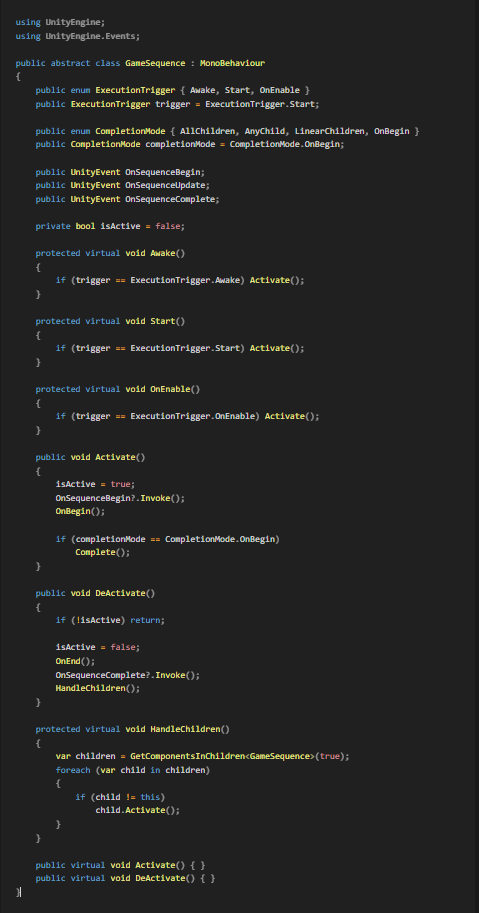Medium
2d
126

Image Credit: Medium
Vibe Coding for Unity Developers 2 — Leveraging Sequence Systems for Enhanced Vibe Coding
- Sequence-based architectures in Unity involve every sequence inheriting from a common base class, GameSequence, which manages when and how sequences activate utilizing Unity's lifecycle methods and UnityEvents for triggering audio/visual effects.
- This method allows for easy configuration and execution of sequences within Unity Editor, promoting modular thinking and scalability in game development.
- Benefits include predictable lifecycle management, no need for boilerplate code for activation, and encouraging a visually composed hierarchy in Unity for interactions.
- Challenges include managing scene hierarchy when over-nesting sequences and potential runtime errors due to improper configuration. Best practices involve clear naming conventions, focused responsibilities, and keeping dependencies encapsulated.
Read Full Article
7 Likes
For uninterrupted reading, download the app